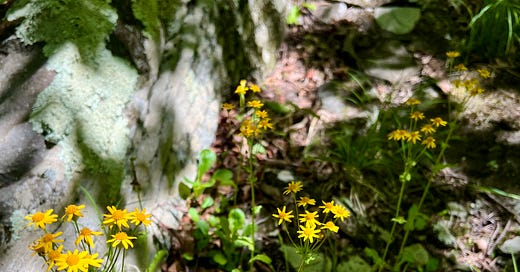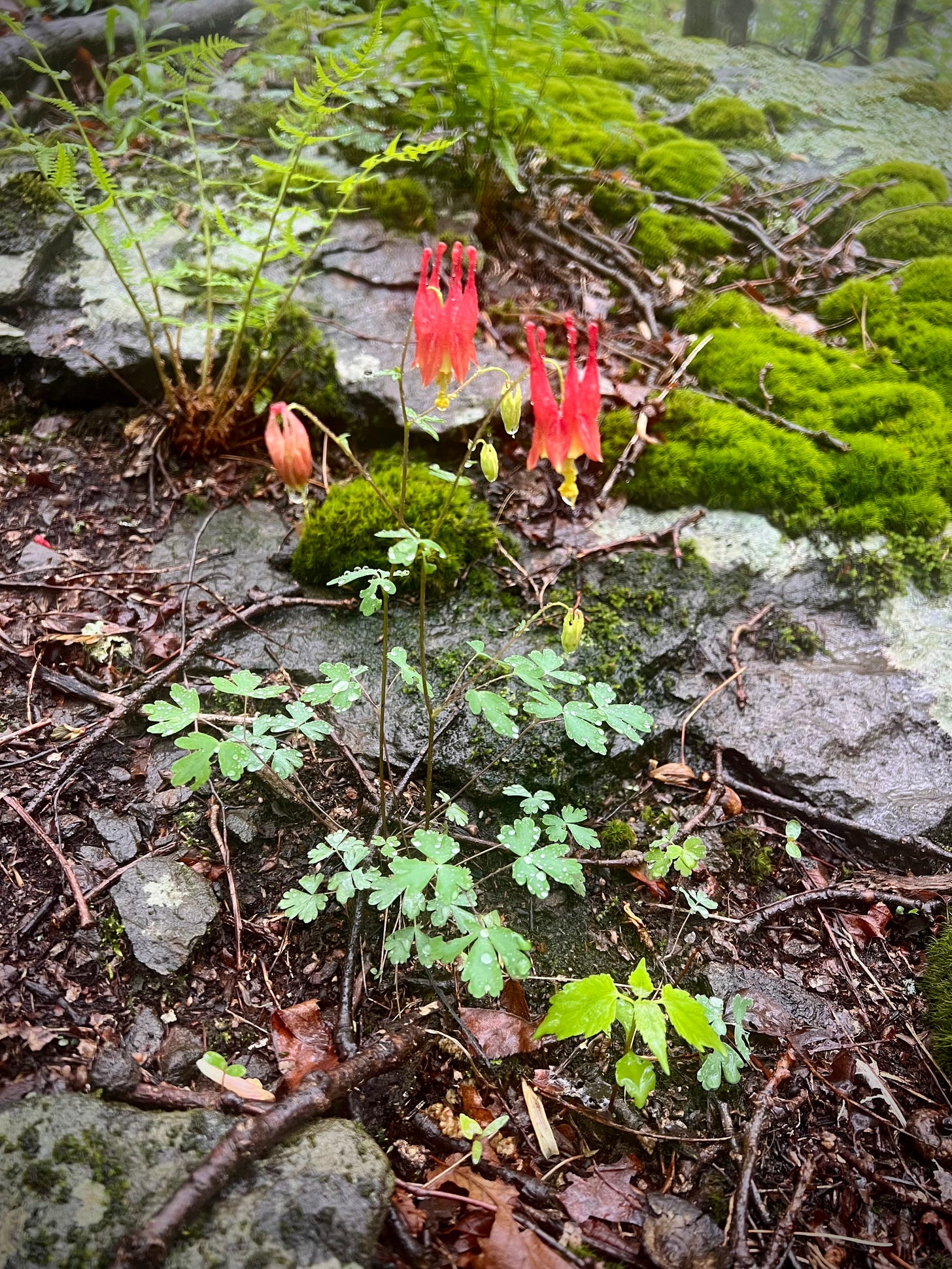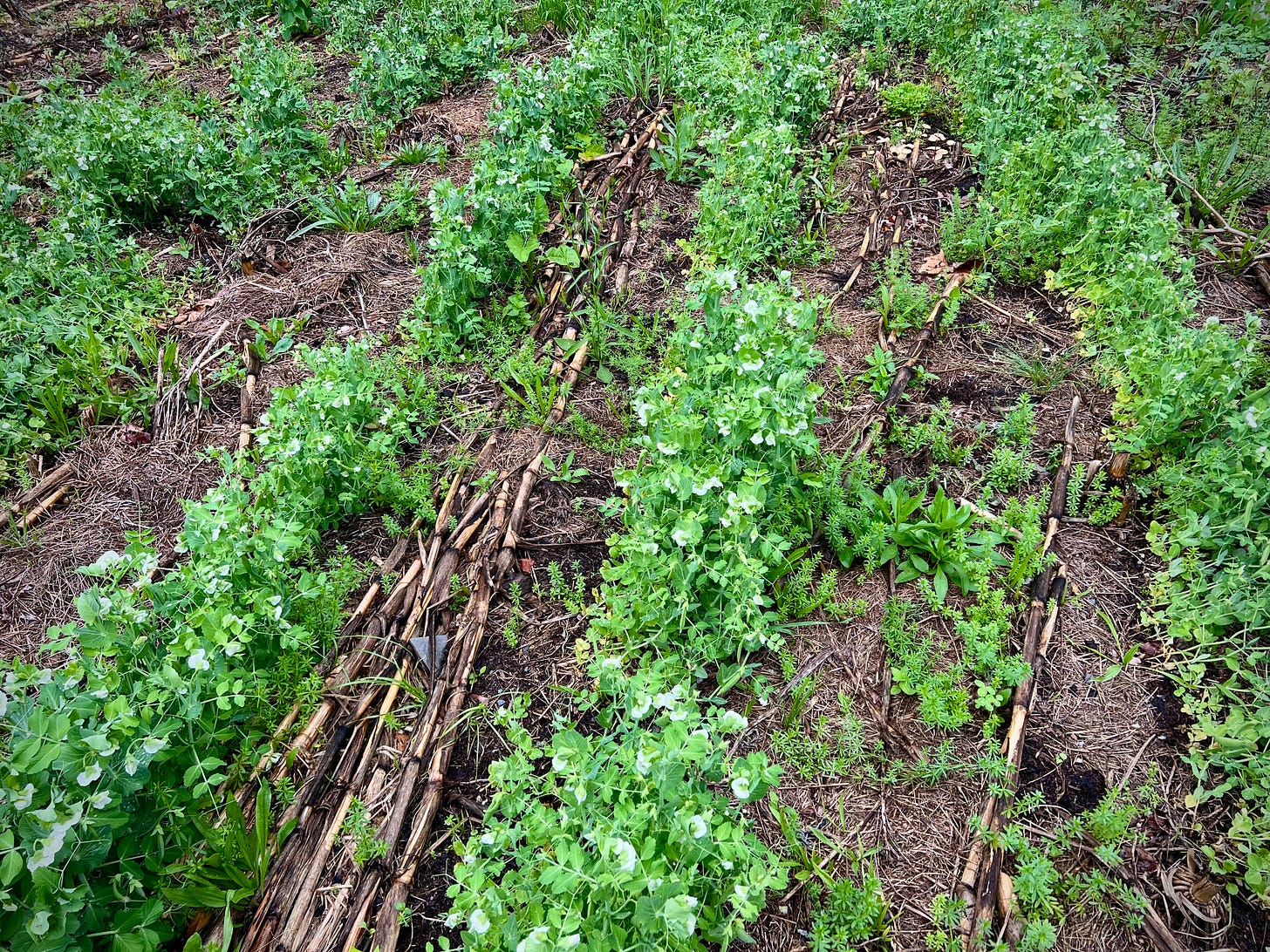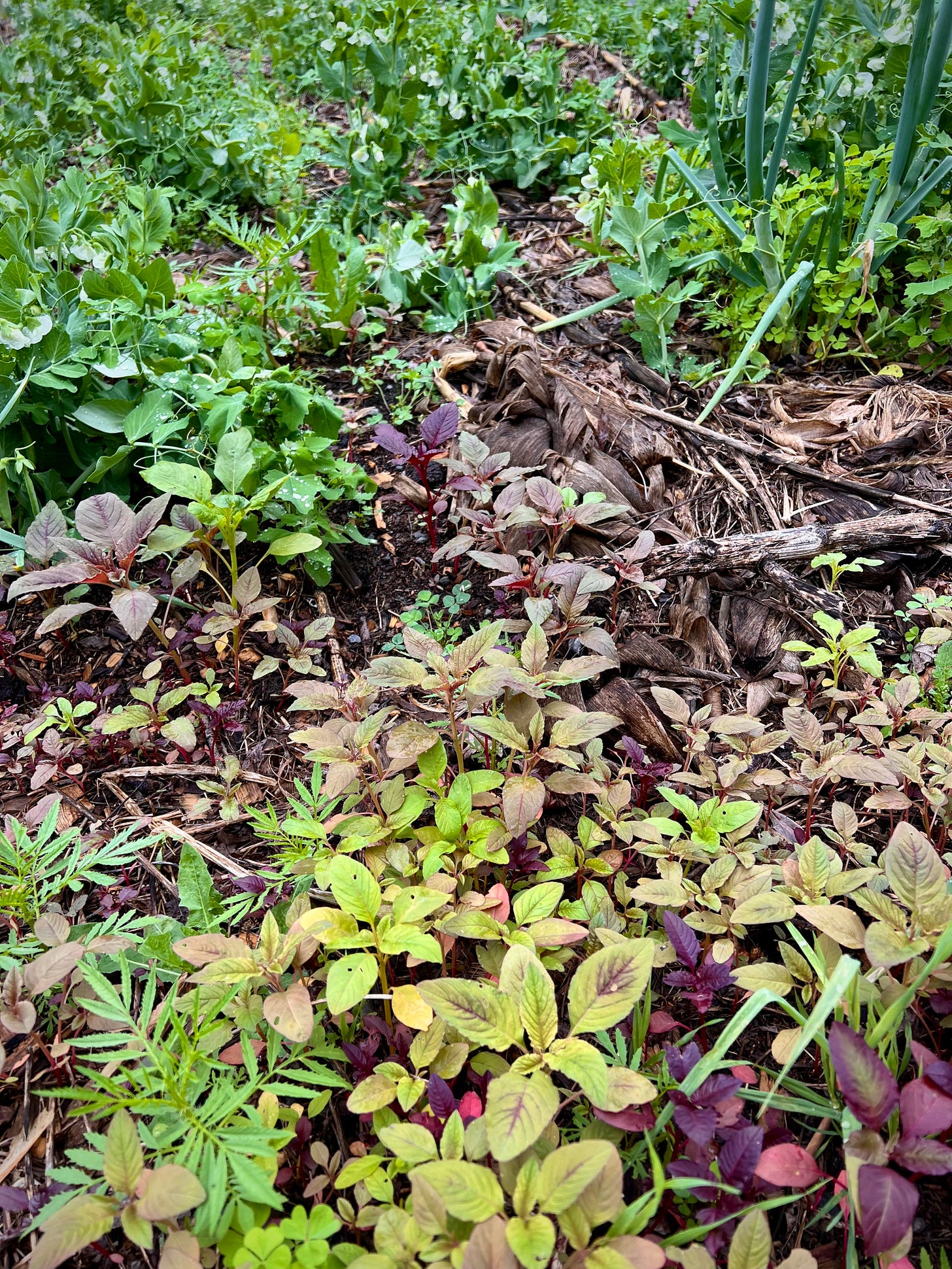Hey friends,
Sorry for the lack of new writing. I’ve been super busy with work, and I’ve also been struggling to decide on a direction for new writing. For now, I’m just going to continue with the direction I’ve been taking, which is essentially to just write whatever comes to mind—from utopian fiction to technical essays to political analysis.
Ultimately, I’d like to write a book, which would, of course, require a lot more focus, but I can’t decide what I should focus on! So I’ll just keep doing this until the time is right to buckle down.
A couple of things I’ve been doing:
Wild sowing
Above are pictures of roundleaf ragwort (Packera obovata) and wild columbine (Aquilegia canadensis), both growing on a section of my land known as an “acidic talus slope woodland”—basically a wooded jumble of rocks that’s moist but well-drained.
Last spring, I really loved seeing these sparse flowers amongst the giant rocks, so I decided to make a little project of spreading them around. Acidic talus slope woodlands are important habitats where I live in the Northeast (and increasingly rare), so I want mine to be lavishly populated with native plants.
As the small flowers gave way to dry seed heads, I collected and scattered them in the vicinity, looking for spots that were similar to where they were already growing. I wandered farther than they were likely to spread on their own, in the hopes of creating new patches along the length of the slope.
This spring, I was thrilled to see that it had worked. Columbines and ragwort came up in areas they had never been before, and the effect was magical. Dozens of new flowers sparkled in the filtered light, and tiny native bees scurried from one to the other. I’ve already begun repeating the whole process this year.
If you have a similar opportunity to support native plants—even if it’s in a city park or a small yard—I strongly recommend going for it. Collecting native seed heads and scattering them in an appropriate spot takes so little effort and the payoff is huge.
If you need help IDing native species, you can use one of the apps like PictureThis or Seek, but the accuracy is poor so always double-check the native range.
3 Sisters experiment
Here’s an experiment that kinda failed. I sowed an early spring crop in my 3 Sisters field in order to add another yield and provide weed suppression until the squash took over. I settled on a snap pea called ‘Sugar Sprint,’ a very early variety that would yield before being outcompeted by the corn, beans, and squash; peas are also nitrogen fixers, so there’s an added benefit. This variety was described as not requiring a trellis, so it seemed perfect for my project: I’d get some tasty snap peas, some free nitrogen, and a pile of vegetation to outcompete the weeds. I’d then either sow the 3 Sisters around them or cut some peas down to make room.
Well, I achieved two out of three goals. The peas are tasty, and they’re fixing nitrogen. But the weed suppression was a failure. The reason is this: I followed the instructions on the packet, which said to sow rows 2-3’ apart. I imagined they needed that space to sprawl out.
Turns out, they don’t sprawl. The reason why they don’t require a trellis is that they climb each other. So what I ended up with is perfectly straight rows of self-supporting snap peas, and a healthy population of weeds in-between.
To successfully suppress weeds, I would’ve had to scatter the snap peas everywhere. This, of course, would make it impossible to harvest the peas without walking on the plants, but that’s a fine compromise since I could never harvest them all anyway.
But at this point, I’m actually planning to take a totally different approach next year. I’m thinking of putting the chickens in the field from early spring until June 1st (which is when I sow corn), and letting the chickens eat all the weeds that come up (plus scratch around for seeds and grubs). The downside to this is that they’ll also eat the volunteers that come up from the amaranth and other edible crops in the border, which is a labor-saving part of my process.
Alas, until I can finish converting the surrounding grass and marginal areas to tidy native plant zones, weed seeds will continue to blow into the field. So I’ll let the chickens do their thing next year, and then take another crack at snap peas somewhere down the line.








Have you done anything about fungi? It would be cool to see what grows on that acidic patch
iNaturalist is my preferred identification app, it's been an incredible boon for my efforts to learn about what's left of our wild places here in Florida. it also has helped me network with researchers and land managers